Malaria still a challenge – health worker
The community of Isseneru, located on the Mazaruni River in Region Seven (Cuyuni/Mazaruni) has seen significant development over the years and residents there are anticipating further progress.
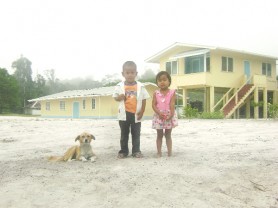
When this newspaper visited the community recently, residents there told Stabroek News that the community has seen a number of changes, mainly in the area of infrastructural development. Among these were the construction of a school and teacher’s quarters, a new health centre and a playground, which is located about a mile away behind the community.
Dhannes Larson, who was elected Toshao of the village some two months ago, told this newspaper that the health centre and the nursery/primary school all ‘started from scratch’. He said construction of the two buildings was financed through assistance from the government while the teacher’s quarters was built via assistance from the Social Impact Amelioration Programme (SIMAP). He noted that the school was started several years ago when the residents sought the assistance of a resident, one Lawrence Joseph, to assist in teaching children within the community. He said shortly after Joseph was paid a salary as the school became recognized by the Ministry of Education.
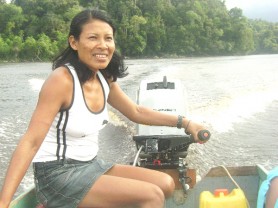
Larson noted that the health centre is playing a vital role where the health of residents in the area is concerned – particularly in relation to malaria. In this regard, the captain stated that the disease is now under control. He said years ago, when persons were tested for the mosquito-borne disease, the results would not be known until after a few weeks since the ‘test slides‘ had to be taken to Georgetown for analysis before being returned to Isseneru. That is no longer the case. The captain also recalled an outbreak within the community in 1985-86 when most residents became infected with the disease.
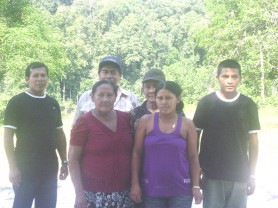
Community Health Worker (CHW) Pauline Courtman who works at the health centre along with her mother Jacquline Joseph, said that malaria is one of the challenges facing her unit. She said there had been a number of cases over the past several months, with 7 out of 43 tests conducted last month turning out to be positive. She said most of the cases are external, being miners who work on mining claims outside of the community.
Joseph told Stabroek News that in cases of emergency the patients treated by the health centre are referred for treatment at a health centre at Kurupung where a medex is based or they are referred to Georgetown. Joseph, who has been a CHW for the past 20 years and who has delivered most of the children at Isseneru, said that she plans to retire this year so that she can ‘get some rest’. She said she will concentrate on caring her children as well as farming, one of the main economic activities at Isseneru, with mining playing an important role as well.
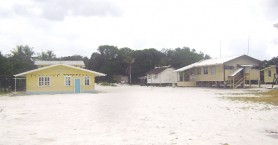
Where the latter is concerned the village council at Isseneru – about five hours by boat from Bartica – only recently acquired control of mining activities within its jurisdiction. The village captain noted that after Isseneru received its land title about two years ago, mining in the area had been regularized. He said a good relationship exists between miners and the village council with the miners agreeing to certain terms of agreement set out by the village council.
No alcohol
Among those stipulations are that the miners are required to purchase fuel and rations from the village council’s shop, no alcohol or illegal firearms are allowed within mining concessions, and the concessionaires are required to compensate an employee whenever that person sustains injuries while working on the concession. At the moment mining operations are required to pay the village council 12% on every ounce of gold produced, with part of this sum going towards payment for the services of rangers who monitor the mining concessions.
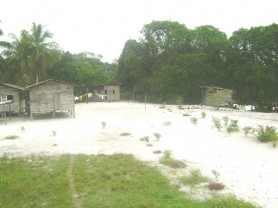
Larson said that there are presently 24 dredges in operation at Haimaraka – an area within the Isseneru Villlage council’s jurisdiction where mining takes place. Two Sundays ago, the council opened a new ‘village shop’ at Haimaraka which Larson said will serve the village as well as miners in the area.
At the moment, the Canadian International Deve-lopment Agency (CIDA)-funded Guyana Environmental Capacity Development Project (GENCAPD) is working on the establishment of a tailings management project at mining sites in the area. GENCAPD is also looking at the possibility of establishing a reclamation site at mining sites in the area as well as the establishment of an aquaculture project.
Agatha Joseph, one of two sisters and the oldest persons at the village, told Stabroek News that the village only had about two houses back in the mid -1980s when she and her family settled there. She said she and her husband served at the hydromet station in the village more than two decades ago and following the death of her husband recently, she has taken over where he left off where monitoring of the station is concerned. The 65-year old Joseph noted that many persons moved down the Mazaruni River from the Kurupung area where a hydroelectricity project was expected to be established years ago. She said she and other families were told that they would have had to relocate from the project area, thus families began to settle at areas along the Mazaruni River including Isseneru, Apaikwa and Tamakay among other communities. She said she has seen a number of changes to Isseneru over the years, noting that in the past most persons used their canoes to travel around the area.
Speedboats
Speedboats can be heard now as early as 3 am in the morning at Isseneru, most of them ferrying miners to the ‘back dams’. One noticeable feature is the number of women and the smooth manner in which they operate the outboard engines of their speedboats while travelling along the Mazaruni River nearby. The community is accessible by air and water, the latter being preferred by most residents there. Residents utilize the services of a jet boat service which operates between Parika on the Essequibo River and Isseneru as well as other communities along the Mazaruni River. The service operates on a weekly basis and the boats leave Parika around 3 am in the morning, arriving at Isseneru about 10-12 hours after. Passengers are charged $85 per pound for goods while $11,000 is charged per person. The airfare offered by the domestic airlines operating between Ogle and Olive Creek, a mining area located several miles away from Isseneru, ranges between $11,000-$18,000.
The word ‘Isseneru’ is derived from the Akawaio word ‘Issululu” meaning ‘people dying one after the other’. The village is located approximately 15-20 miles west of Kurupung and is situated at the bottom of a small hill. Most of the 260 persons living at Isseneru came from other areas within that administrative region as well as other parts of the country. The village is governed by a seven-member village council, including the Toshao, with each member having responsibility for different areas of development including farming, mining, education and health.

